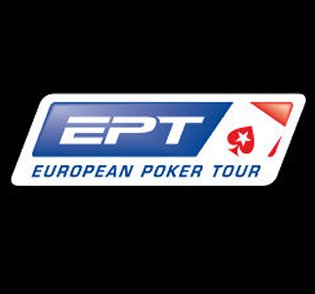
The thirteenth season of the European Poker Tour (EPT) has started and today marked the opening of the season’s first Main Event, at EPT Barcelona. More on the tournament itself in a later article, but for now, one of the more interesting bits of news coming out of the EPT recently was that PokerStars, which operates the Tour, changed the payout structure of its tournaments. Instead of paying 15 percent of the field, tournaments will now pay down to 20 percent.
In a blog post announcing the decision, PokerStars briefly explained that it was a way to make the events more fun for more people, giving people a chance to at least come away with something, even if they didn’t nab one of the top payouts. Of course, this means that those top payouts will not be as large anymore, as those extra cashes have to come from someone. PokerStars said, though, that the effect shouldn’t be as severe as people might think:
For example, 220 players bought into a €1,000 Hyper at Barcelona last year. The winner collected €45,134 and 31 players were paid out with 31st getting €1,878. This year, the winner would collect €38,028 but 47 players would be paid out with 47th getting €1,238. That same 31st player would get €1,921.
In an interview with PokerNews, PokerStars Department Head of Live Poker Operations Neil Johnson gave additional insight into the decision making process, saying that about half the players in EPT Season 12 played in only one or two events, even though each stop has dozens and dozens of tournaments, many with affordable buy-ins. He continued:
We started looking at the payouts in a vacuum and to see what made sense. We took all the preconceptions out of it. We saw that if we would pay out 20 percent instead of 15 percent, we could give 5 percent of the field a do-over. It’s effectively like saying ‘Thanks for coming, I hope you had a lot of fun. Sorry you didn’t make it into the big money, good luck the next time because here’s money for another shot.” If someone has a buy-in to play another poker tournament, that’s a good thing. So that’s the direction we ended up going.
“To keep a healthy poker economy, a solid liquidity for live tournament poker, you need more winners,” Johnson added later. “You need more people able to buy in and play so the fields continue to grow. You don’t want to see a situation where it just stagnates, which happens if there’s not getting new money in.”
Johnson said that unlike when the payout structure was increased from 10 to 15 percent, players were not surveyed to seek their input for this latest change. Looking back to the previous change, Johnson recalled:
The options were 10 percent, 12.5 percent, and 15 percent, and all three of them got 33 percent of the votes. Whatever we did, 66 percent was going to be angry. We did what we thought was in the best interest of the poker economy at that time.
This time, we ran all the data we had and decided again to do what we thought was in the best interest of the poker economy and poker players. We’ve done what we think was the right thing to do.
Many pros did not react to the change positively, as the money that is being removed from the upper-end payouts, particularly in the high buy-in tournaments, is a big deal for top tournament players. They don’t want thousands or tens of thousands of dollars being removed from final table positions, as that’s money they count on – as much as one can count on making a final table regularly – to pay the bills and to pay for more tournaments.
Shortly after the PokerNews interview, PokerStars decided to revert back to a 15 percent payout structure for €50,000 Super High Roller and €25,000 Single-Day High Roller events, which makes sense, since those are populated by pros who really don’t care about min-cashes and breaking even on their buy-ins.























